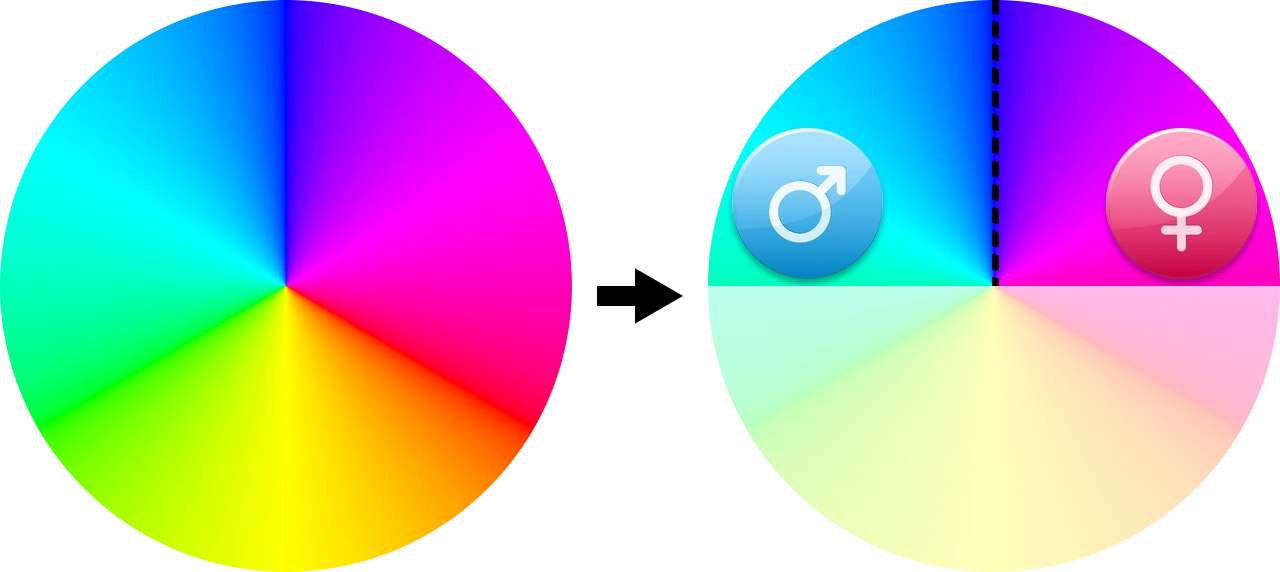Last night I had the idea that I could use the motion of the hands to change the color of the particles. However, it’s tough to abstract one-dimensional ideas into 3D applications. I need to figure out what type of motion should trigger color alteration, and for that, it’s best I wax metaphysical…
Let’s say a particle’s color represents its “gender”, which is a result of the interplay between masculine and feminine energy sources. I still remember an old Elliot Hulse video where he proposed that masculine energy works on a lateral plane and the feminine on a horizontal plane. I choose to follow his logic; therefore, body scale would correspond to masculine energy, while body position would correspond to feminine energy.
If I can plot the masculine and feminine on opposite sides of a single line, I win. The problem is that since the color wheel is circular, any arbitrary division of it produces a line that stops right where it starts. Notice how each endpoint of the colorful line below is red.

Therefore, in order to hide the seamless unity of all things and create polarity, we need to hide half of what’s visible:

As you can see, when I hide half of the circle, we now get a spectrum with clear opposites.
Now, let’s get practical. Following the example above, let’s say a fully teal color represents a value of 100% masculine / 0% feminine, while a fully pink color represents a value of 0% masculine / 100% feminine. Our line can then be plotted between these two values, with our particle color mapped to the percent ratio between the masculine and feminine values.
What would control this ratio? Well, on a frame by frame basis, I’ll need to compare the rates of change to the body’s position and scale. These rates will need to be normalized to one another so that color isn’t biased toward one factor.
I can even have a third factor control the colors at each pole, since those are arbitrary.

As an aside, while researching color mapping, I came across some interesting sites. This one, in particular, informed me that transmuting the color circle into a one dimensional slider should not be done by gradually increasing hue, then saturation, then brightness values.
Seizure warning:
Next, I came across a process called domain shading that can be used to map a point in 2D space to a color using a function. This site allows me to visualize domain shading with custom functions and even has a trippy webcam function that could be great for visuals.
This demo feels closest to what I’m looking for in terms of seamlessly moving between colors in infinite space. I’ll need to do more research to learn how it can be implemented in Unity with a shader.